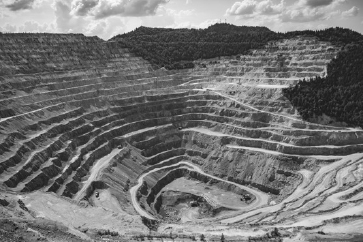The crucial role of geological data in resource modelling
Reliable geological data is a key factor in highly profitable and optimised mines because it provides a solid foundation for accurate resource and geologic models.
Is your resource model well-supported by quality data? For a geologist, your data underpins all the assumptions for the way the deposit will be mined.
Data gathered throughout the mine’s life span feeds the resource and geologic models but geological data is not always managed in a way that ensures your original observations and measurements maintain accuracy for the life of the mine.
The quality of your data affects your resource modelling. Accurate modelling supports mine planning to ensure the expected grade of ore comes out of the ground at the right cost. The plan allows the team mining the resource to make the right decisions about how to get the best grade of ore possible.
All of the assumptions made in the plan need to be based on data that is already collected, analysed and stored. If you can’t trust the accuracy of the data, you’re starting at a disadvantage that’s hard to overcome.
Here’s the thing, the goal in modern mining is not to extract as much ore as possible at any cost, but to make the mine as profitable as possible by working within constraints. The focus on profitability becomes even more critical in a downcycle.
If a suboptimal mine plan based on inaccurate data is used to carry out operations, no amount of cost cutting or productivity boosting activities will make up for it. That’s why it’s so important to focus on data integrity before you begin resource modelling.
Read more: The least reliable data management software in mining
Quality data for accurate modelling
Though they are not the only roles affected, geologists are especially impacted by data quality. Catching errors early has direct impact on their jobs because it decreases the amount of rework needed and increases the confidence in the resource model.
Better data for modelling means less guesswork and improves the quality of ore being produced and processed.
The resource model is based on observations and measurements such as location, surveys, assays, and logging. All this data, ideally, is managed by a geoscientific information management solution, like GIM Suite.
When there’s improvement in geological data, it impacts how the project or mine performs overall. If the original observations and measurements of the model are wrong, the effects will flow into mine planning and affect profitability. While there are many other factors impacting mine planning, poorly supported resource models have significant impact.
Dig Deeper: Is your mine site using the right software tools for the right job?
What does good geological data management look like?
Geological data management software provides a trusted repository where data can be stored and allows all functional roles in a project to get access to it.
GIM Suite provides across-the-board improvements in key areas, giving the best possible data to geologists to improve mining operations, including:
- Alleviates compliance and data integrity concerns by providing a single source of truth for all your geological data
- Gives access to the data to everyone who needs it, when they need it
- Improves the efficiencies of high-volume data capture and management
- Gives you complete control over your data from the point of capture through to batch sample submission to the laboratory across web, desktop and mobile
- Applies validation rules from the point of capture to ensure no corrupt or incorrect data is stored
- Ensures the quality of your geological data from capture at the first drillhole or sample, through the life of the mine and even after decommissioning
- Provides auditable data, which improves trust for reporting, critical decision-making, governance and compliance reporting requirements
- Establishes consistent processes that allow people to be trained quickly and minimise the loss of IP with staff turnover.
Find out more about geological data management
If you’d like more information about how GIM Suite contributes to highly profitable and optimised mining operations, give us a call or drop us an email.


